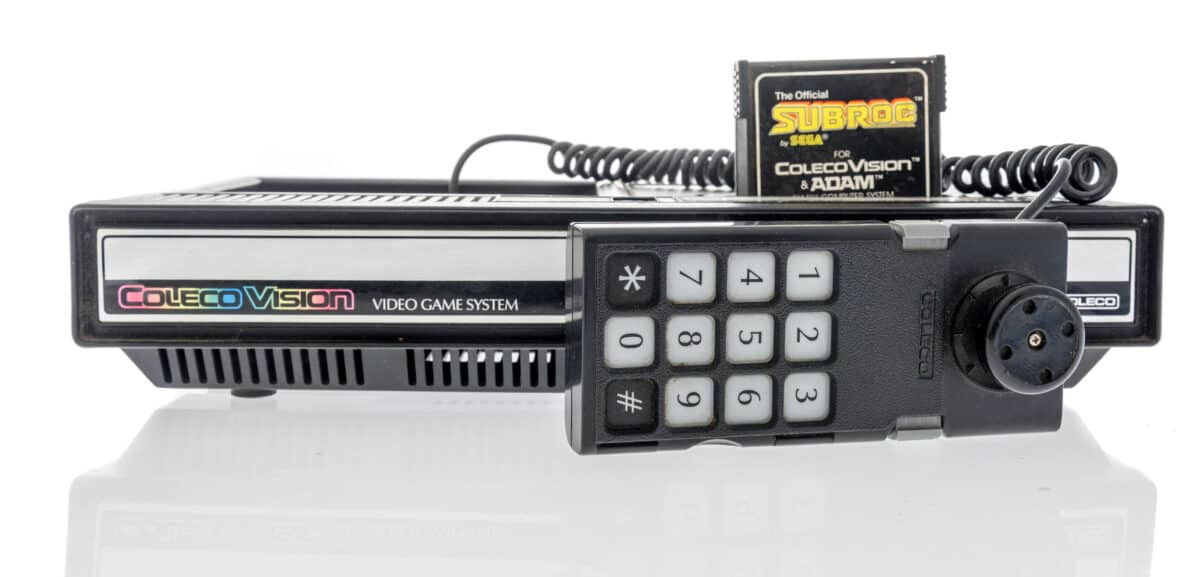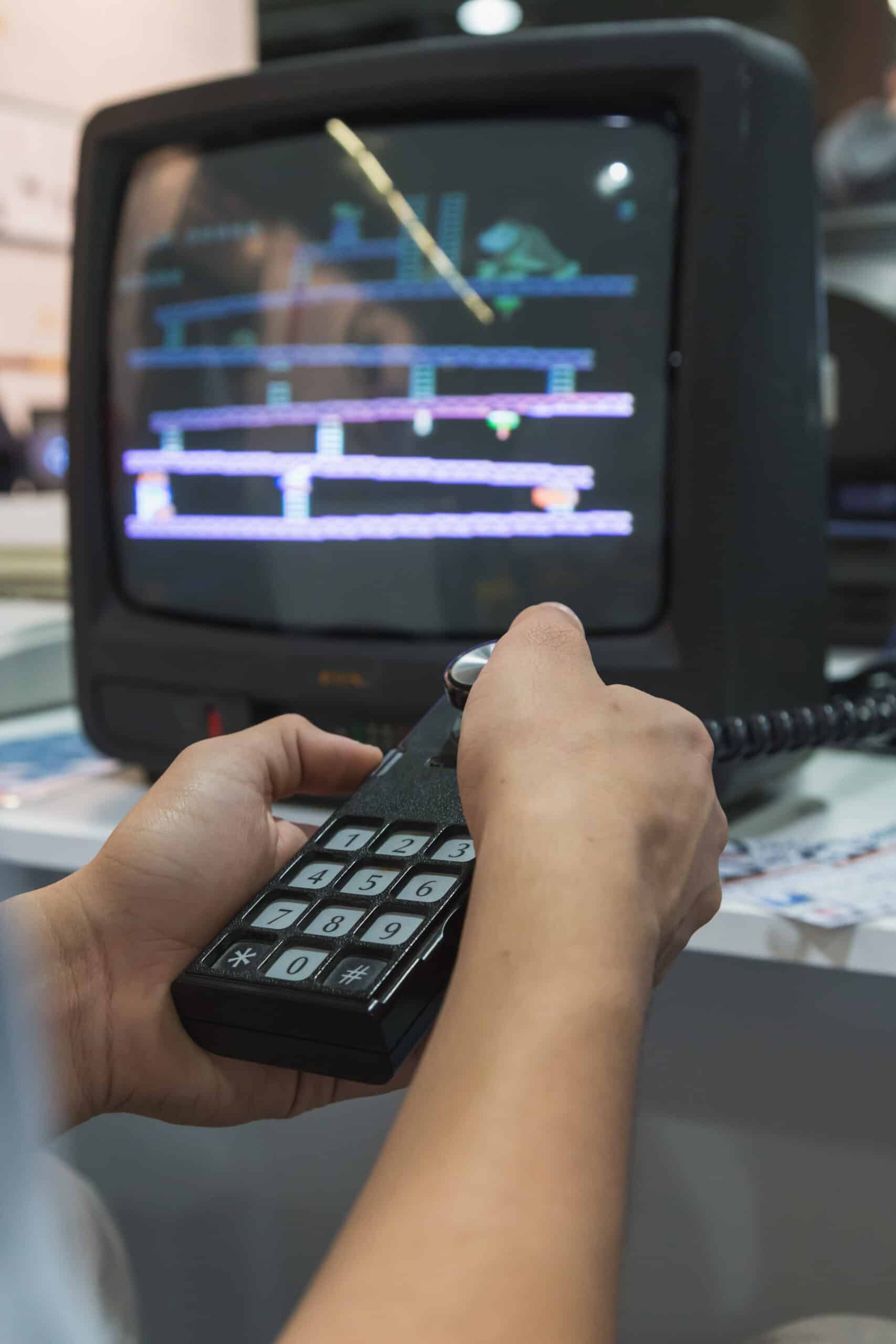Key Facts
- In spite of the heavy losses Coleco incurred as a result of a decline in the sales of its console Telstar, its other offerings enabled it to remain afloat in the gaming sector.
- ColecoVision was created in 1981 when executives took advantage of the dip in the price of components.
- The console was launched in 1982 and half a million units were sold in the last quarter of the year. Coleco would go on to sell a million of them in total by the spring of the following year.
The year is 1982 and Atari’s 2600 video game console is selling well and has opened the door for video game consoles to belong in the home. Coleco, having tried home consoles once in 1976, decides the time is ripe yet again for bringing another home console to market.
Even as history will remember the Atari 2600 as the first video game console to really break through, the ColecoVision is here to remind us that Atari wasn’t the only player in town. In fact, had the video game industry not collapsed in 1983, you very well might be telling a different history of which console won the first “console wars” in the early 1980s.
ColecoVision’s history is a fascinating one and a reminder that not even good hardware can overcome market forces.
Quick Facts
| Release Date | August 1982 |
| Lifespan | 1982-1985 |
| Units Sold | Greater than 2 million |
| Introductory Price | $175 |
| Key People | Arnold Greenberg, Eric Bromley |
| Notable Titles | Donkey Kong (built-in), WarGames, Zaxxon, Donkey Kong Jr. |
History of ColecoVision
The ColecoVision story began a few years before 1982 when, in 1976, Coleco entered the video game market with its line of Telstar consoles. Sales of the Pong-like console were initially strong but eventually, consumer interest dried up and Coleco would take a $22 million dollar hit on the Telstar system.
As 1982 rolled out, Coleco was still active in the video game world, thanks to sales of its handheld electronic game systems and tabletop arcade games with license rights from companies Nintendo, Sega, and Midway.
Because of the success of these systems, Coleco had enough money to return to the home console market, and, in 1979, the engineering lead for Coleco, Eric Bromley, decided they would do just that. However, it wasn’t until 1981 that the price of components would drop low enough that Coleco believed they could make a financially sound home console system, and the “ColecoVision” was born.
Also happening in 1981 was outreach from Coleco to a small Japanese company known as Nintendo in the hopes of copying Atari’s success with third-party licensed titles. Coleco would go on and secure the rights to release their upcoming console bundled with a Donkey Kong cartridge.
Release
Once the deal with Nintendo was finalized, Coleco moved forward and released the ColecoVision to the world in August 1982. Between August and Christmas of the same year, Coleco moved more than 500,000 units of its console. While a lot of the success was attributed to the inclusion of Donkey Kong, Atari had released its successor to the Atari 2600, the Atari 5200, to little fanfare.
By the spring of 1983, ColecoVision had sold more than one million consoles and that was before it was released outside of the U.S. Rebranded as the CBS ColecoVision due to distribution agreements with CBS Electronics (yes, the CBS you are thinking of), the console would be released around Europe in July 1983.
Declining Sales
As the great video game crash of 1983 took shape, reducing total console sales in the U.S. market by 97%, the ColecoVision was on a major decline. Coleco would spend the next 18 months attempting to wind down its video game division and finally withdrawing from the market by the middle of 1985. The ColecoVision would officially be discontinued in October 1985.
All totaled, sales had exceeded more than 2 million units and had the video game crash of 1983 not occurred, ColecoVision may very well have gone on to sell five times that number.
Spectravideo
Even though 1983 would go on and be a disastrous year for video games, that didn’t stop Spectravideo from announcing its SV-603 “ColecoVision Video Game Adapter” for the company’s SV-318 computer. Available to customers for $70, the adapter enabled Spectravideo computer owners to “enjoy the entire library of exciting ColecoVision video-game cartridges.”
Hardware
Unlike the Atari which was a plain black box with a woodgrain front, the ColecoVision hardware had a much different personality. Still a black box, but unlike Atari, ColecoVision cartridges were added to the right side rather than Atari’s choice to use the middle of its hardware. The controllers are plugged into a recessed area at the top of every ColecoVision console.
Coleco opted for a much different approach with the controller. Whereas Atari went with an ultra-minimal joystick with a single button, ColecoVision opted for a rectangular controller that included a numeric keypad and buttons on the side.
A small joystick adorned the top of every controller but what was most interesting about the controller hardware was its expandability. Every ColecoVision controller keypad was designed so that it could accept a thin plastic overlay and map the appropriate keys for every ColecoVision game released.

Hardware Expansions
One of the contributing factors that could have led to far greater success for the ColecoVision if it had time on store shelves was its hardware expandability. The developers at Coleco had the foresight to build the ColecoVision as if it were a computer that could play video games which opened the door to many possibilities for adding future hardware components.
Atari 2600
In today’s gaming world, the thought of building an expansion pack to play the games of your biggest competitor would be unheard of. However, ColecoVision did exactly that with its Atari 2600 expansion unit. As the ColecoVision used components that were not specific to its hardware in any meaningful way and closely matched those of the Atari 2600, reverse-engineering the Atari 2600 console was easy enough for Coleco engineers.
While the expansion module would drive Atari to sue Coleco, the expansion unit would give ColecoVision the largest software library on the market.
Driving Expansion
Part steering wheel, part gas pedal, the driving controller was a brilliant expansion pack Coleco would include with the purchase of Turbo. Less of an expansion pack and more of a device that plugged into a controller port, the driving controller would go on to be compatible with a number of titles, including The Dukes of Hazzard, Pitstop, and Bump ‘n’ Jump.
Adam Computer
The most interesting expansion pack for the ColecoVision was known as the Adam and it turned the ColecoVision hardware into a full-blown personal computer. You could add a keyboard, cassette driver, and printer and use it as a home computer by just plugging in the different accessories. The Adam computer expansion pack wasn’t cheap at $750 and didn’t sell terribly well because of its high price, but it was still an incredible achievement for a video game console.
Roller Controller
This trackball-based expansion unit was packaged with the purchase of Slither and helped gamers at home play the title as if they were still planning in an arcade. Another title, Victory, was later added to support the roller controller as well. Eventually, a joystick mode was also included as part of the roller controller so it could later work with popular titles, like WarGames and Centipede.
Super Action Controller
Just as the name hints at, the Super Action Controller was a unique set of two handheld joysticks packaged with every purchase of Super Action Baseball. Each joystick had its own set of four action buttons, one joystick had a 12-button numeric keypad, and the other had the “speed roller.” During the ColecoVision’s lifecycle, the super action controller would go on and be compatible with Rocky Super Action Boxing and Super Action Football.
ColecoVision’s Legacy
If you haven’t caught on by now, ColecoVision had plenty of promise and was only stopped by the video game crash of 1983. It’s an unfortunate turn of events but it doesn’t dampen the ColecoVision legacy in any way. The hardware was very unique and it could turn into a computer with an expansion pack, making it one of the most unique consoles still to this day.
One of the greatest highlights of the ColecoVision was its approach to going after licensed arcade games that Atari had ignored. That meant approaching companies like Namco, Sega, and Konami, all names that would go on to be major players in the video game universe.
All totaled, 145 games would be released for the ColecoVision, many of which were ports of popular arcade games. If you could go back in time and ask ColecoVision owners why they purchased it over Atari, there’s a good chance many would say because they could play the arcade games they loved in the comfort of their own homes.
One final aspect of the ColecoVision legacy is that, by leaving the market, Nintendo was free to enter and reinvigorate the game industry with a little-known game system, the Nintendo Entertainment System. The rest, as they say, is history.
The image featured at the top of this post is ©Tinxi/Shutterstock.com.

